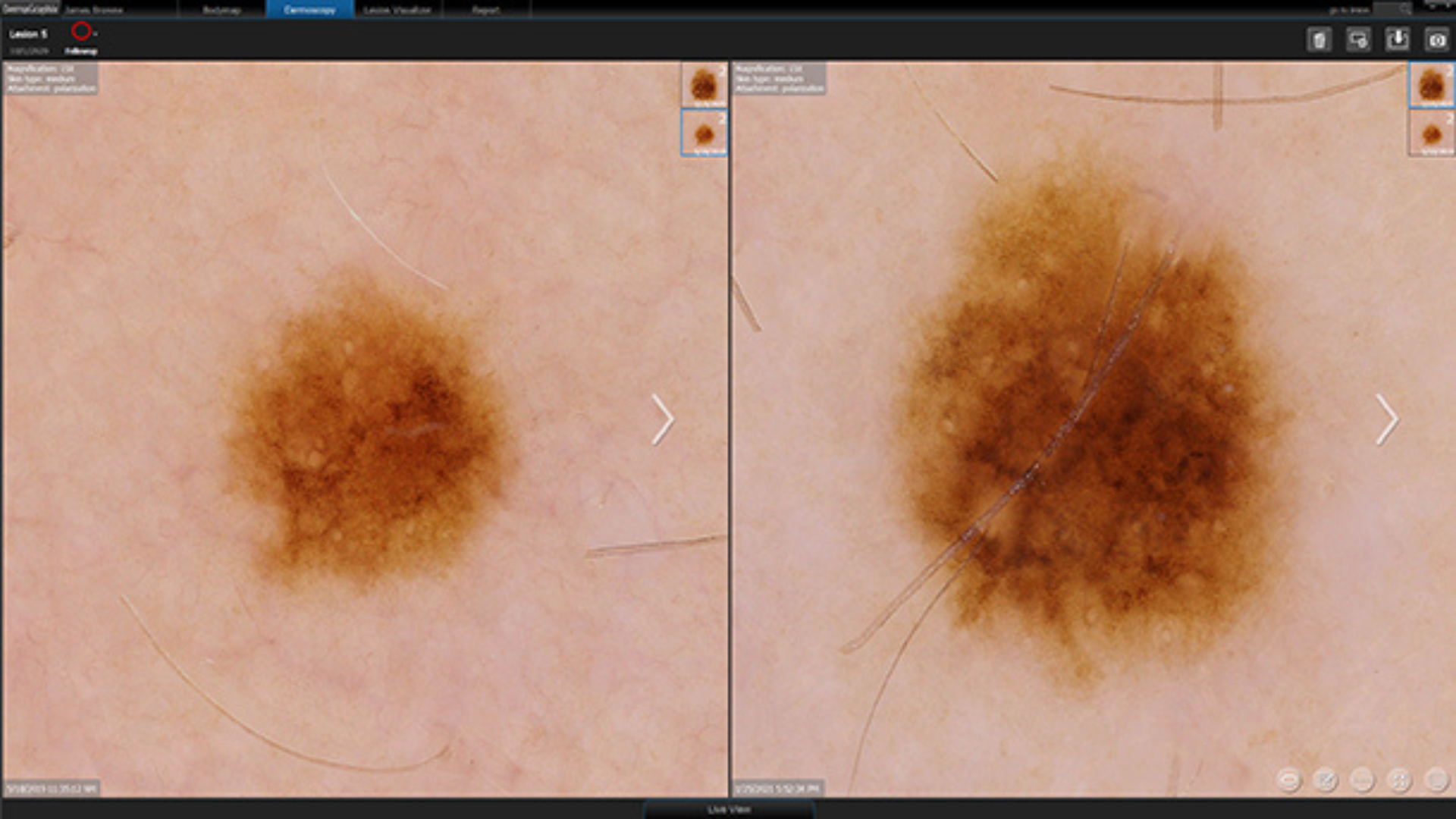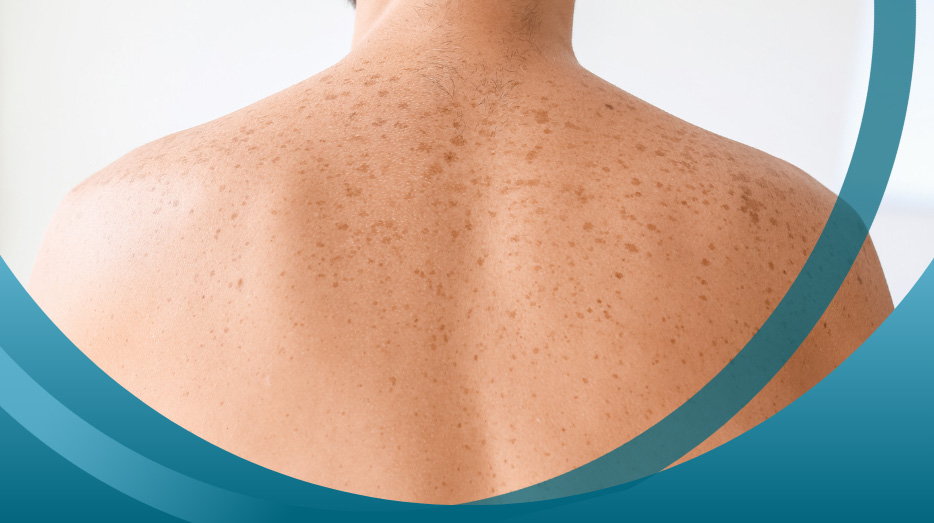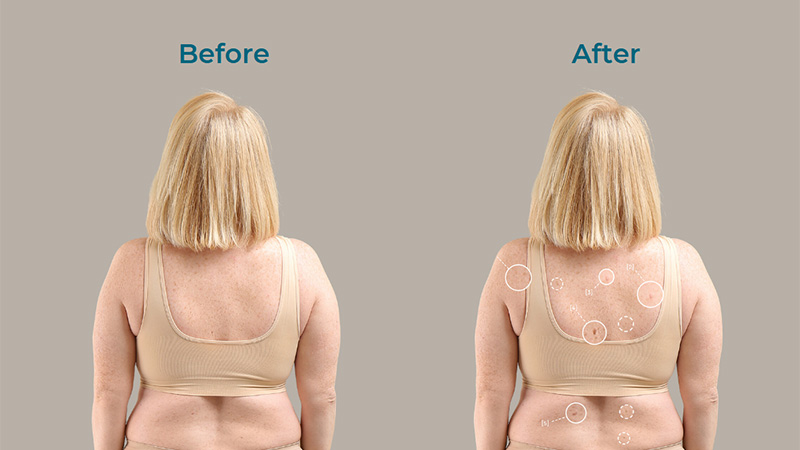When skin cancer is found early, it’s easier to treat successfully. Body mapping is a powerful tool that helps catch the earliest signs of skin cancer, offering a comprehensive way to monitor changes in your skin over time.
What is body mapping?
Body mapping is a detailed, head-to-toe photographic record of your skin. In just 2 minutes, our system captures high-resolution images showing the size, shape, colour, and location of your moles, freckles and spots.
Once the scan is done, the computer system creates an avatar of your body, tagging each lesion. A powerful AI program then assesses each mole based on size, shape, asymmetry, and colour to help identify any that may require closer inspection with dermoscopy.
A body map doesn’t just help with the immediate investigation of suspicious moles. It also creates a baseline for future comparisons. Future body maps can be compared with your first one to identify any lesions that are changing over time.
This technology can be particularly useful for people at higher risk of skin cancer, including those with a personal or family history of melanoma, fair skin, or a large number of moles.
The dangers of skin cancer
Skin cancer is the most common form of cancer in Australia. It develops when skin cells are damaged, typically by ultraviolet (UV) radiation from the sun or tanning beds.
There are three main types of skin cancer:
- Basal cell carcinoma (BCC): the most common and least aggressive form, usually appearing as a small, pearly bump or a pinkish patch. It can cause significant tissue damage if not treated early.
- Squamous cell carcinoma (SCC): more aggressive than BCC, often presenting as a firm, red nodule or a scaly, crusted lesion that may bleed easily. It can spread to other parts of the body if left untreated.
- Melanoma: the most dangerous type, known for its ability to spread quickly to other organs. It often appears as a new or changing mole that may be asymmetrical, have an irregular border, vary in colour, or be larger than 6mm in diameter.
The importance of early detection
Early detection is critical in the fight against skin cancer as it means treatment can begin before the cancer has had a chance to spread. When caught early, even melanoma – the deadliest form – has a five-year survival rate of around 99%.
How body mapping detects changes over time
One of the most significant advantages of body mapping is its ability to detect even the smallest changes over time. Such changes may be hard for the eye to see but they’re relatively easy for the computer to measure.
As noted above, a body map creates a comprehensive baseline of your skin. Subsequent maps can then be compared against this baseline to reveal subtle changes in size, shape, or colour that might indicate early cancerous growth.
This ongoing, high-tech monitoring reduces the risk of missing a critical change that could be life-saving.
What happens if something of concern is detected?
At Skintel, your body map is step 1 of a comprehensive skin cancer screening and detection program. If the body map reveals a suspicious change, the next steps might include:
- A closer examination of suspicious lesions using dermoscopy
- An optical biopsy (confocal microscopy) – a non-invasive way to diagnose skin cancer.
Conclusion
Body mapping is a proactive way to stay ahead of skin cancer. Book your body map today.
Disclaimer
All information is general and not intended as a substitute for professional advice.
References
- Melanoma Institute Australia, Total body photography, https://melanoma.org.au/wp-content/uploads/2022/08/MIA22-TOTAL-BODY-PHOTOGRAPHY_update.pdf, [Accessed 19 May 2025]
- Cancer Council, Types of skin cancer, https://www.cancer.org.au/cancer-information/types-of-cancer/skin-cancer, [Accessed 19 May 2025]
- AIM at Melanoma Foundation, https://www.aimatmelanoma.org/melanoma-101/early-detection-of-melanoma/how-to-tell-a-mole-from-melanoma/, [Accessed 19 May 2025]
- American Cancer Society, Survival rates for melanoma skin cancer, https://www.cancer.org/cancer/types/melanoma-skin-cancer/detection-diagnosis-staging/survival-rates-for-melanoma-skin-cancer-by-stage.html, [Accessed 19 May 2025]





